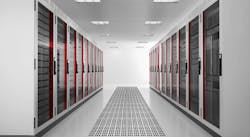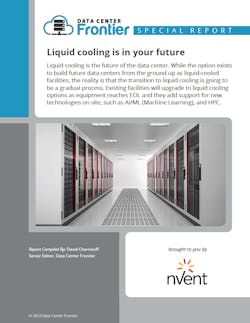Liquid Cooling is in Your Future. Are You Ready?
This launches our article series on liquid cooling in data centers.
Liquid cooling is the future of the data center. While the option exists to build future data centers from the ground up as liquid-cooled facilities, the reality is that the transition to liquid cooling is going to be a gradual process. Existing facilities will upgrade to liquid cooling options as equipment reaches EOL and they add support for new technologies on site, such as AI/ ML (Machine Learning), and HPC.
WHY LIQUID COOLING IS IMPORTANT
You’ve built a stable, effective data center for your operation. It meets your current needs and the future growth that was projected when the facility was designed. Perhaps most importantly, its operational costs are well established and easy to budget. So why do you need to consider major changes to the way the data center operates? Why is liquid cooling on the table?
First, air cooling on its own is no longer sufficient to simply meet your current operational needs. As your IT workload equipment moves to the end of its lifecycle, your replacement hardware is going to be more space efficient. The equipment deployed at the beginning of your last refresh cycle is going to be replaced with hardware that is faster, more effective, and more efficient at doing the necessary work.
This isn’t new. You can walk into a data center built a decade ago and find that a data hall that housed a dozen racks may now only have a single rack that is handling a much higher workload than the original deployment. And the first thought to cross your mind is likely “Why do I need to add more space? Why aren’t we using the free space here?” Quite a few data centers were constructed with the ability to increase the power available within the facility, but far fewer were built to handle the increased heat load brought on by higher rack densities. There’s a good chance that adding additional capacity isn’t possible because you will exceed the capacity of the air-to-air cooling systems built with the data center. And wholesale rip and replace is rarely a practical solution.
Second, environmental issues and a focus on sustainability means that you need to make your facilities more environmentally friendly. Cooling systems that are more efficient reduce energy demands, the number one complaint when evaluating data center changes. Additionally, reducing environmental footprint, be it noise, power, space requirements, or any other factor, must be on the list of data center improvements.
Third, technology will continue to change. Be it HPC, AI, or any new technology that places an increased demand on the IT workload supported by the data center, the demand for a more efficient data center will continue. While some changes can be planned well in advance, others, as highlighted by the rapid demand for supporting AI workloads, will come at a fast and furious pace. And you will need to be able to respond to those demands quickly to maintain business agility.
WHY DO I NEED TO ADD LIQUID COOLING?
While you may not be looking at making changes to your existing hardware deployments, the availability of liquid cooling options within your data centers will increase their flexibility and capabilities.
Upgrades or additions to your existing data centers should utilize hybrid liquid/air cooling technology. This means that your existing air-cooled operations won’t be impacted and you’ll have the option in new hardware deployments to determine the most cost effective and solution-focused choices as you place the technology necessary to solve your business problems.
If there is good justification for construction, building new data centers or additions to existing facilities that are completely liquid-cooled can be a smart choice. The wide selection of liquid cooling options available means that you will most likely end up with a hybrid cooling model, but should your IT workload demand it entirely liquid-cooled data halls that serve specific needs are a practical solution to a number of potential issues. In part, this is because liquid cooling isn’t a single solution. There are a number of different liquid cooling solutions that can be deployed in concert with each other or to solve specific point problems.
Download the full report, Liquid Cooling is in Your Future, featuring nVent, to learn more. In our next article, we'll look at the most common options for liquid cooling. We'll also discuss the logical progressions for deploying liquid cooling solutions.








